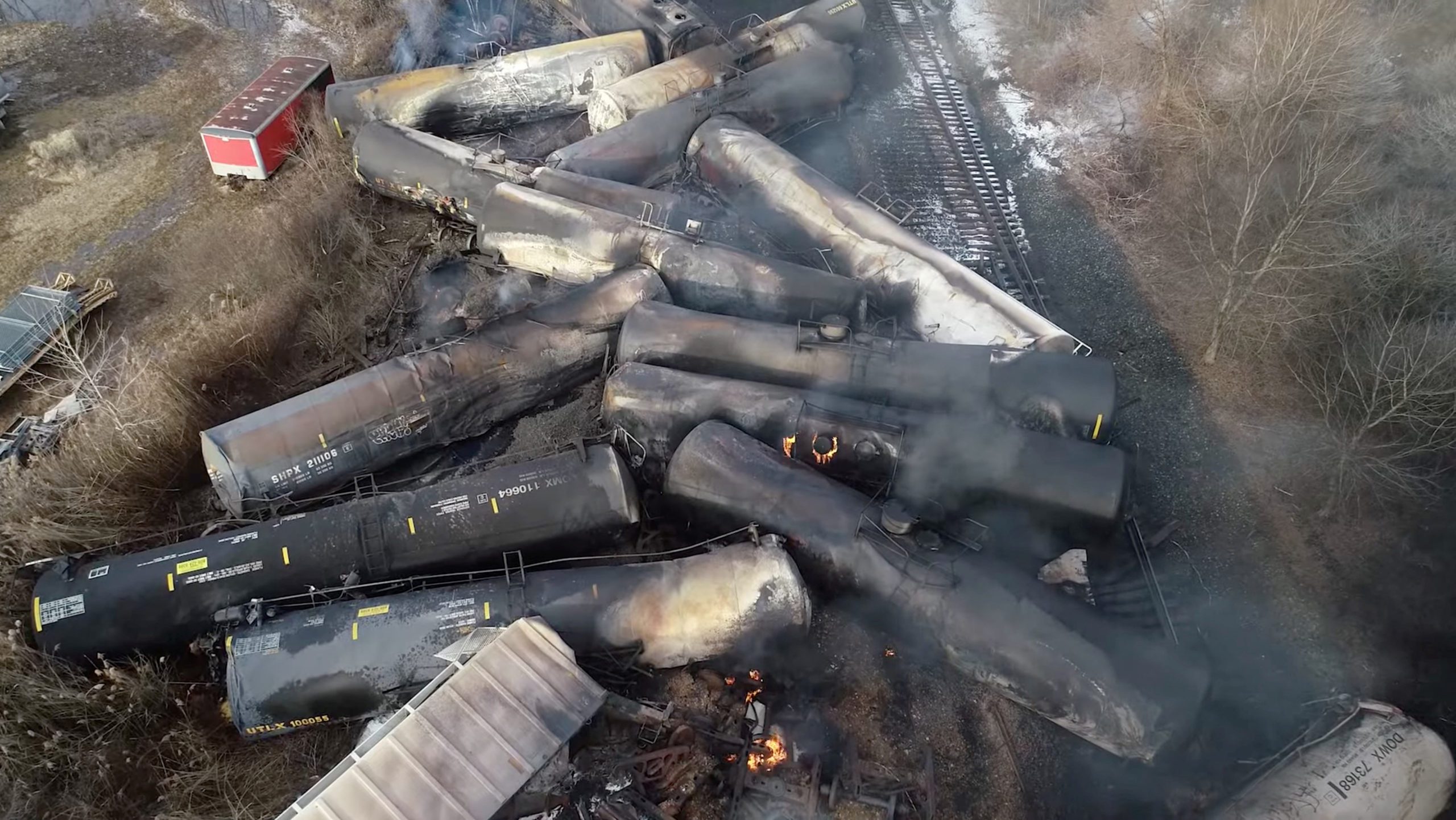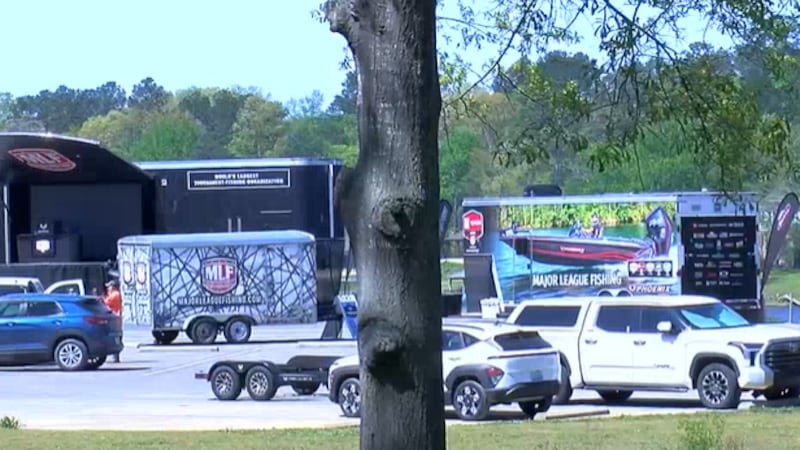Ohio Train Derailment: The Long-Term Impact Of Lingering Toxic Chemicals On Buildings

Table of Contents
Types of Toxic Chemicals and Their Impact on Building Materials
The derailment released a cocktail of hazardous substances, but two stand out for their potential for long-term building contamination: vinyl chloride and butyl acrylate.
Vinyl Chloride's Persistent Threat
Vinyl chloride, a known carcinogen, is particularly concerning due to its volatile nature and ability to permeate building materials. Its low molecular weight allows it to easily seep into porous materials like drywall, insulation (particularly fiberglass), and wood. This penetration can lead to long-term exposure, even after the initial cleanup.
- Long-term health risks: Exposure to vinyl chloride can cause liver cancer, brain tumors, and other serious health problems. Even low-level, long-term exposure is a concern.
- Potential building damage:
- Discoloration of walls and ceilings.
- Weakening of structural integrity over time.
- Persistent off-gassing, releasing vinyl chloride into the air within the building.
- Examples from similar incidents: While the East Palestine derailment is unique in scale, studies of past industrial accidents involving vinyl chloride have shown similar patterns of long-term contamination in buildings.
The Impact of Other Released Chemicals (e.g., butyl acrylate)
Butyl acrylate, another chemical released in the derailment, also poses significant risks. While less volatile than vinyl chloride, it can still adhere to surfaces and potentially leach into building materials over time.
- Potential impacts: Butyl acrylate can cause respiratory irritation, skin sensitization, and eye irritation. Its impact on building materials may include corrosion of certain metals and degradation of plastics and paints.
- Long-term health concerns: Chronic exposure can lead to various respiratory issues and skin conditions.
- Material reactions: Different building materials will react differently to butyl acrylate. For example, certain plastics might become brittle and break down, while metals could experience corrosion.
- Specialized testing: Identifying the presence and concentration of butyl acrylate (and other released chemicals) requires specialized laboratory testing of air and building materials.
Assessing and Mitigating Building Contamination
The extent of contamination and the necessary remediation steps require careful assessment by qualified professionals.
The Need for Comprehensive Building Inspections
Comprehensive inspections are critical to determine the extent of contamination in affected buildings. These inspections should not be delayed.
- Professional inspections: Only qualified environmental professionals with expertise in hazardous materials can accurately assess the extent of contamination.
- Types of tests: Air quality testing, material sampling (drywall, insulation, etc.), and potentially soil testing around the foundation are all necessary.
- Agency involvement: The Environmental Protection Agency (EPA) and state environmental agencies play a crucial role in overseeing these inspections and setting remediation standards.
- Steps in a thorough inspection:
- Visual inspection for signs of damage or discoloration.
- Air sampling to measure the concentration of volatile organic compounds (VOCs) like vinyl chloride.
- Material sampling for laboratory analysis to identify the presence and levels of various chemicals.
Remediation and Decontamination Strategies
Remediation strategies will depend on the type and level of contamination.
- Decontamination: This might involve cleaning surfaces, air filtration, and specialized treatments to remove or neutralize chemicals.
- Material replacement: Severely contaminated materials (drywall, insulation, flooring) may need to be completely replaced.
- Demolition: In extreme cases, demolition of the entire structure might be necessary.
- Cost implications: Remediation can be expensive, depending on the extent of contamination and the chosen strategy. The cost will often be borne by the property owner, but legal recourse may be available.
- Specific remediation techniques:
- HEPA filtration for air purification.
- Chemical neutralization techniques for specific contaminants.
- Encapsulation of contaminated materials to prevent further spread.
Legal and Financial Implications for Affected Property Owners
Navigating the legal and financial landscape after a disaster like this is challenging.
Navigating Insurance Claims
Filing insurance claims for contamination damage can be complex.
- Challenges: Insurance policies often have exclusions or limitations related to environmental contamination.
- Documentation: Comprehensive documentation of the damage, professional assessments, and communication with the insurance company is vital.
- Disputes: Disputes with insurance companies are common, and legal counsel may be necessary.
- Tips for maximizing coverage: Retain all relevant documentation, seek professional assessments, and understand your policy thoroughly.
Legal Recourse and Potential Litigation
Affected property owners may have several legal options.
- Legal avenues: Lawsuits against the railroad company, contractors, or other responsible parties may be possible.
- Class-action lawsuits: A class-action lawsuit could consolidate claims from multiple property owners.
- Environmental law: Environmental laws provide legal frameworks for addressing contamination and recovering damages.
- Potential legal avenues:
- Negligence claims against responsible parties.
- Breach of contract claims if remediation is not addressed properly.
- Claims under environmental laws for property damage and health impacts.
Conclusion
The Ohio train derailment's long-term effects on buildings contaminated by lingering toxic chemicals present a complex and significant challenge. Thorough building inspections, effective remediation strategies, and navigating the legal and financial ramifications are crucial for affected property owners. Understanding the potential risks associated with vinyl chloride, butyl acrylate, and other released chemicals is essential for protecting public health and ensuring the long-term safety of the affected community. If you are a property owner in the affected area, seek professional assessment and guidance to address the lingering threat of Ohio train derailment toxic chemical contamination. Don't hesitate to contact qualified professionals to evaluate your property and explore all available options for remediation and legal recourse.

Featured Posts
-
 Bmw And Porsches China Challenges A Broader Industry Issue
May 16, 2025
Bmw And Porsches China Challenges A Broader Industry Issue
May 16, 2025 -
 Ataka Rossii Na Ukrainu Posledstviya Massirovannogo Raketnogo Udara
May 16, 2025
Ataka Rossii Na Ukrainu Posledstviya Massirovannogo Raketnogo Udara
May 16, 2025 -
 Who Is Ali Marks Getting To Know Jalen Brunsons Wife
May 16, 2025
Who Is Ali Marks Getting To Know Jalen Brunsons Wife
May 16, 2025 -
 Assessing The Accuracy Of Trumps Claims Regarding Us Canada Trade
May 16, 2025
Assessing The Accuracy Of Trumps Claims Regarding Us Canada Trade
May 16, 2025 -
 Impact Of The Gsw Lockdown Student Voices And Reflections
May 16, 2025
Impact Of The Gsw Lockdown Student Voices And Reflections
May 16, 2025
